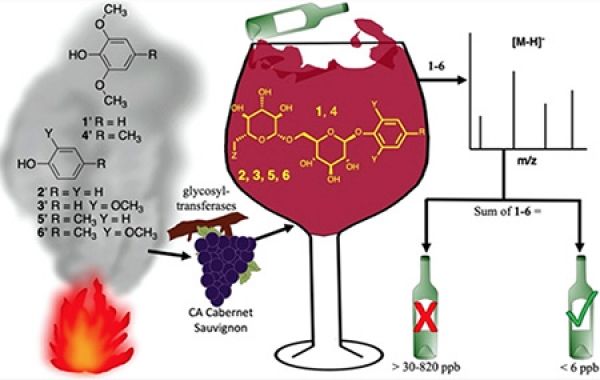As wildfire season in the West grows in length and severity, it is taking a toll on the wine industry through the effects of wildfire smoke on the quality of wine grapes. Volatile compounds in the smoke from wildfires can be absorbed by grapes and produce an unpleasant taste known as “smoke taint” in wines made from affected grapes.
A new study led by scientists at UC Santa Cruz provides valuable data and guidelines for using analytical chemistry to identify grapes and wines affected by smoke taint. Published March 3 in the Journal of Natural Products, the study is based on an analysis of more than 200 samples of grapes and wine from 21 grape-growing regions in California and Oregon.
Lead author Phil Crews, a distinguished research professor of chemistry at UC Santa Cruz, is also a winemaker and owner of a small winery (Pelican Ranch Winery). He said the extent of the smoke taint problem came to his attention in the aftermath of the 2018 Mendocino Complex Fire, when large wineries began rejecting grapes from the affected region and Crews was retained as a consultant by legal firms representing wine professionals.
“What I discovered was that proper analytical data was not provided to figure out if the grapes or wines were affected by the smoke,” he said.
Read more at: University of California - Santa Cruz
Wildfires produce volatile phenols which accumulate in grapes as phenol glycosides and give rise to unpleasant “smoke taint” in wines. Chemical analysis to quantify biomarkers in grapes and wine can be used to assess the likelihood of smoke taint. (Photo credit: Crews et al., J. Nat. Prod. 2022)


